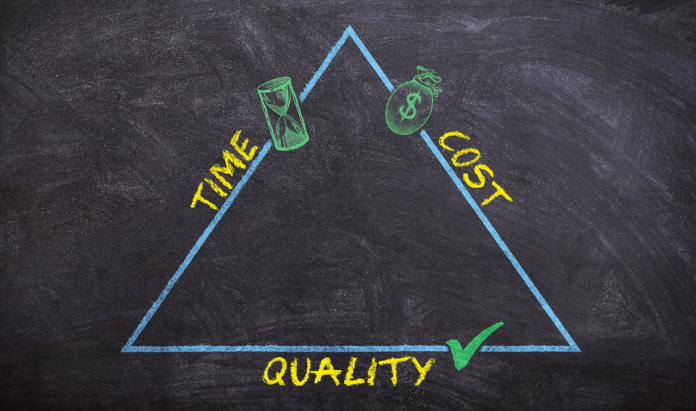The primary purpose and benefit of using digital signage CMS (Content Management Software) is to help you with content management wherever possible. And, indeed, running a strong and an effective digital signage strategy requires a lot of work. For a start, you’ll do a significant amount of content creation from scratch, transforming data into content—a task OnSign TV can help you with—and deploying all of it to the target audience at the appropriate time where it will make the greatest impact. Quite a lot to juggle if there is no automation present.
Below, we’ll go over the main benefits of digital signage software. Once those base building blocks are ready, we move to more important benefits which are achieved only once digital signage software is used appropriately. As you’ll find, this includes a clearer overview of analytics, an easier way to implement branding strategies as well as customer targeting, and adding business partnerships to your to-do list.
Content management tools
When looking for a strong digital signage CMS to use, look for the tools you will need, starting with those for designing and creating content. Here’s a brief rundown of the key tools OnSign TV provides:
- Dynamic Compositions allow you to stretch, resize, section, adjust, design, and well compose pieces of content. It is your blank canvas to draw on. In it you can include dynamic content too, such as apps and videos!
- With more than 100 apps to choose from, including weather, RSS feeds, and dynamic menu apps, you can import data to generate content. Once you learn your way around the platform, you can quite literally whip up ready-to-go apps in seconds as you need them.
- Data Feeds enable you to import, create, and administrate sheets of information which are fed into apps. For instance, tweaking the price of a menu item in a data feed will update every single app connected to it.
- Several other OnSign TV-specific features help you in the publishing journey, including tools such as the Fallback Loop, the Audio Loop, Triggered content, and more.
- On the access and hardware management end, you’ll find help from features such as User Restrictions and Default Player Settings.
- To manage a sound operation, your dashboard allows you to keep an eye on your players. There is also the Health Check feature which will notify you of any issues or suggestions on how to improve your account.
Now that the base rundown is complete, let’s look into some bigger points of interest!
Data analytics
With Reports, you get a clear overview on playbacks for each piece of content. This data is particularly useful for cross-referencing with foot traffic. We recently discussed the topic of motion sensors and triggered content. If you’re using it to keep a steady eye on foot traffic, you’ll be able to establish which content generated greater traffic. You may also find out what provoked interaction, or made an impact on your sales.
Learning and adapting how your audience processes and responds to content can help you in the future. You’ll quickly establish your go-to content types and templates, versus campaigns which are not to be used as they make no impact on your goals.
Furthermore, reports are very important when presenting data internally, whether it be for higher management, or externally to potential and existing clients who purchase advertising space. Combined with foot traffic tracking, reports can provide a compelling presentation on the reach and impact of your digital signage.
Improved customer targeting
With stronger data analytics at your hand, isolate key times of day and focus on your consumer audience more specifically. You saw a traffic spike every day at noon? There is an advantage there to push sales-focused content.
If you can establish what ties the audience together, what their interests are, and where they’re coming from, you can focus your message further.
It’s all about research. And as much as it would be lovely to find, there is no clear answer on what makes every audience tick. You need to establish that for your audience as it is unique. Digital signage CMS can offer a helping hand on that journey.
Implement your brand style easily
Branding and consistent style use is difficult to keep up if you’re doing things manually. In any case where you have to repeat the same steps over and over again, there is a possibility for error. And with it, a possibility for improvement. With a strong digital signage CMS, the style and branding of your content is set up once and remains consistent throughout the management process.
This can include using corporate colors, the branded template, or seamless logo placement on all of your content.
Deploy sponsored content more easily
The ability to schedule content via digital signage is another colossal benefit as it acts as a powerful time-saver. Once scheduled, your content only needs to be tweaked and it will deploy repetitively whenever you need it. Sponsored content and deploying content from partners is another important topic. Plan it months ahead of time, knowing the content will be deployed consistently and without issue.
As a double-check feature, refer to Reports to see how many playbacks occurred, and weed out any issues which may have come up. This is not only good for managing content, but also delivering proof of play to partners. Keeping these tools in mind, the effort and time you need to invest in honoring partnerships and incorporating sponsored content is minimal. If you haven’t already, look into taking advantage of this asset!
Scalability
There are plenty of other tools within our platform waiting to be discovered. Some things are up to your preference, such as using certain apps over others, or using Campaigns over Dynamic Compositions. But some features are a must-have if you wish to make the most out of your digital CMS.
Invest the effort to build an organized structure and to assign tags and label content consistently. With that, scaling your digital signage will be effortless. Adding a new player to your content structure will be reduced to a few clicks. You may group players together, then deploy content to all of them at once. If you’re running several stores, simply publish the same content set across all of them in just a few clicks. With OnSign TV, you can put tags on anything! Assign tags to content to find it easily whenever you need it. For instance, assign #Filler to images and videos you want to deploy to fill out blank space. Or #Sales to elements used to enhance sales banners.
We’ve only scratched the surface of the many ways you can use digital signage CMS, OnSign TV in particular! If you have a specific use in mind, take advantage of our free trial to explore everything OnSign TV has to offer. Furthermore, visit our tutorial database to explore features and find the steps to get them of the ground.
Cover image by PCB-Tech.







